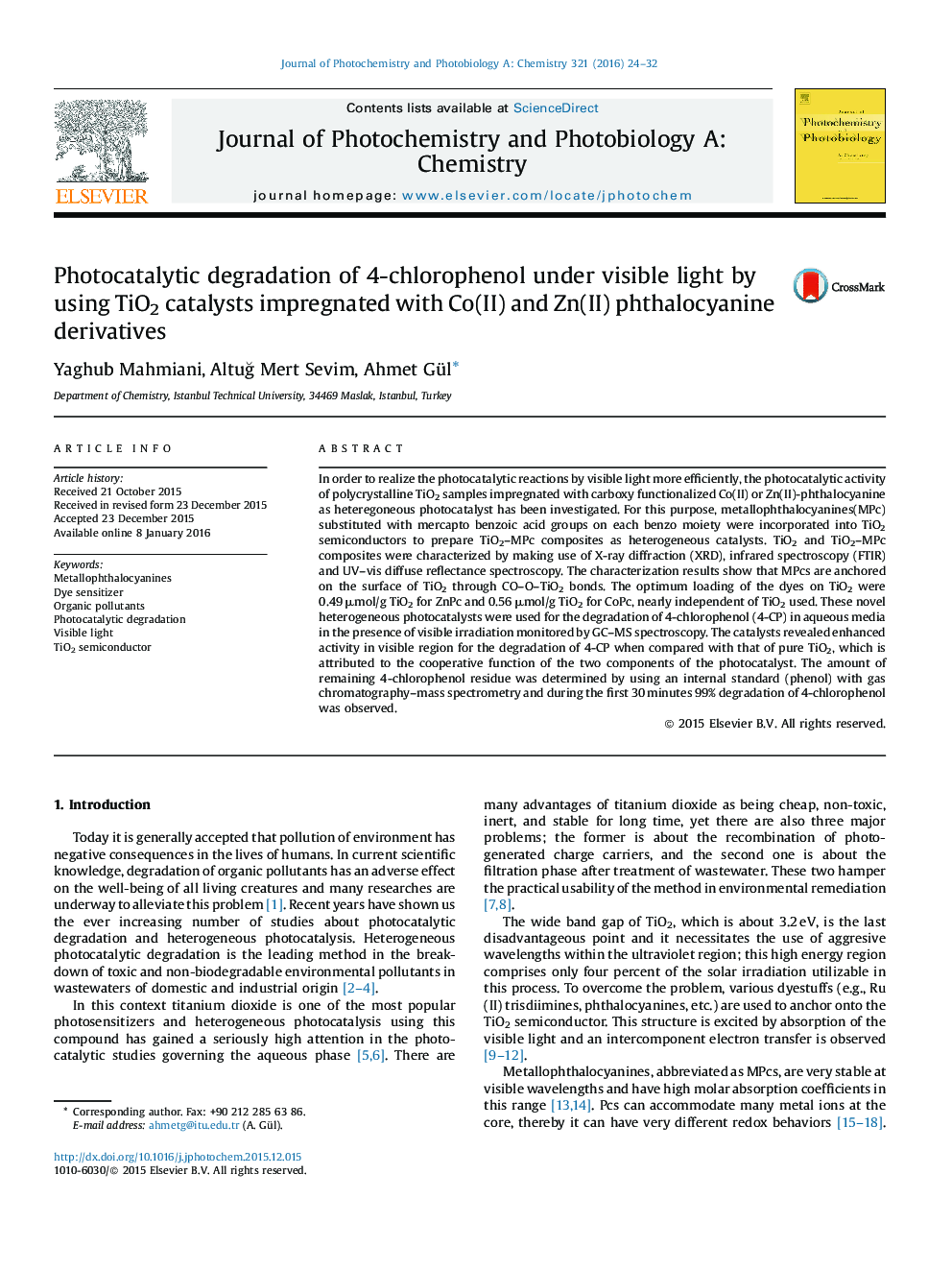| Article ID | Journal | Published Year | Pages | File Type |
|---|---|---|---|---|
| 26249 | Journal of Photochemistry and Photobiology A: Chemistry | 2016 | 9 Pages |
•Pcs tetra substituted with mercapto benzoic acid groups have been prepared.•MPcs were incorporated into TiO2 to prepare TiO2–MPc heterogeneous catalysts.•New catalysts were characterized by XRD, FTIR and diffuse reflectance spectroscopy.•Catalysts were tested for the photocatalytic degradation of 4-CP under visible light.
In order to realize the photocatalytic reactions by visible light more efficiently, the photocatalytic activity of polycrystalline TiO2 samples impregnated with carboxy functionalized Co(II) or Zn(II)-phthalocyanine as heteregoneous photocatalyst has been investigated. For this purpose, metallophthalocyanines(MPc) substituted with mercapto benzoic acid groups on each benzo moiety were incorporated into TiO2 semiconductors to prepare TiO2–MPc composites as heterogeneous catalysts. TiO2 and TiO2–MPc composites were characterized by making use of X-ray diffraction (XRD), infrared spectroscopy (FTIR) and UV–vis diffuse reflectance spectroscopy. The characterization results show that MPcs are anchored on the surface of TiO2 through CO–O–TiO2 bonds. The optimum loading of the dyes on TiO2 were 0.49 μmol/g TiO2 for ZnPc and 0.56 μmol/g TiO2 for CoPc, nearly independent of TiO2 used. These novel heterogeneous photocatalysts were used for the degradation of 4-chlorophenol (4-CP) in aqueous media in the presence of visible irradiation monitored by GC–MS spectroscopy. The catalysts revealed enhanced activity in visible region for the degradation of 4-CP when compared with that of pure TiO2, which is attributed to the cooperative function of the two components of the photocatalyst. The amount of remaining 4-chlorophenol residue was determined by using an internal standard (phenol) with gas chromatography–mass spectrometry and during the first 30 minutes 99% degradation of 4-chlorophenol was observed.
Graphical abstractIn order to realize the photocatalytic reactions by visible light more efficiently, the photocatalytic activity of polycrystalline TiO2 samples impregnated with carboxy functionalized Co(II) or Zn(II)-phthalocyanine as heteregoneous photocatalyst has been investigated. TiO2 and TiO2–MPc composites were characterized by making use of X-ray diffraction (XRD), infrared spectroscopy (FTIR) and UV–vis diffuse reflectance spectroscopy. These novel heterogeneous photocatalysts were used for the degradation of 4-chlorophenol (4-CP) in aqueous media in the presence of visible irradiation.Figure optionsDownload full-size imageDownload as PowerPoint slide
